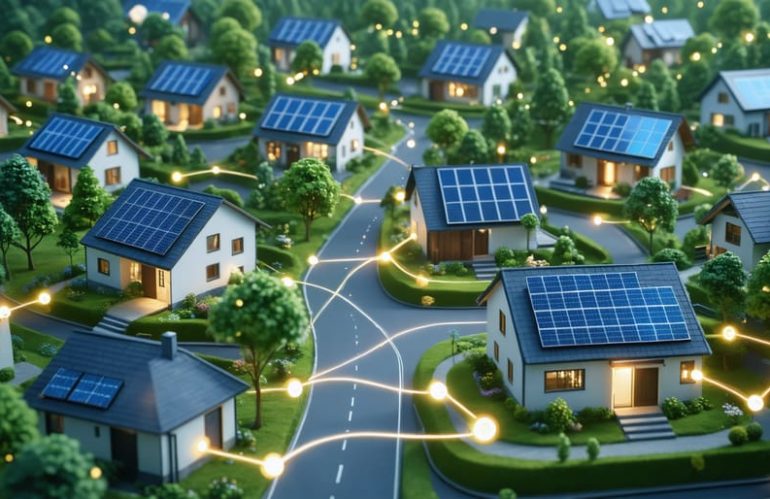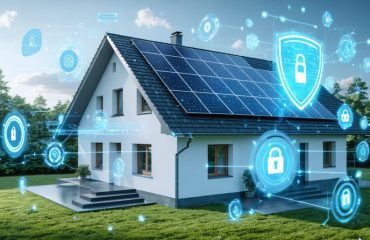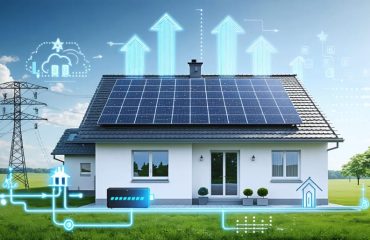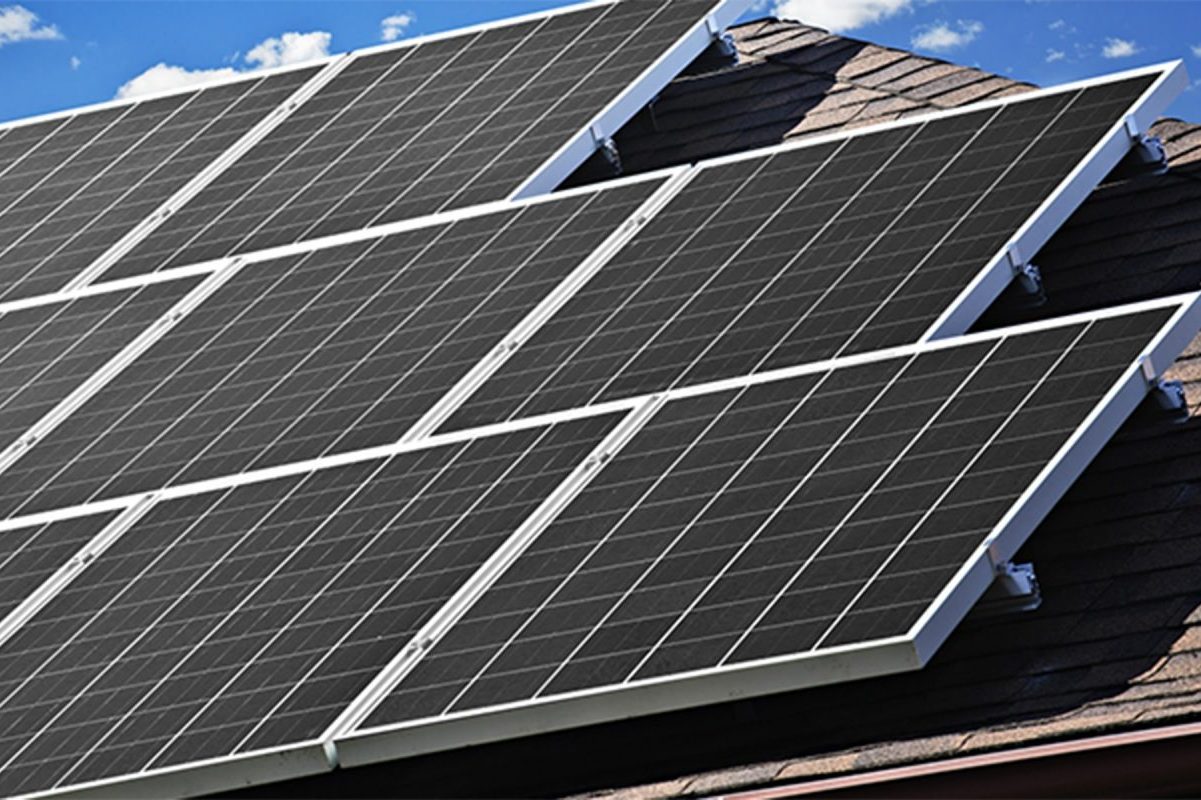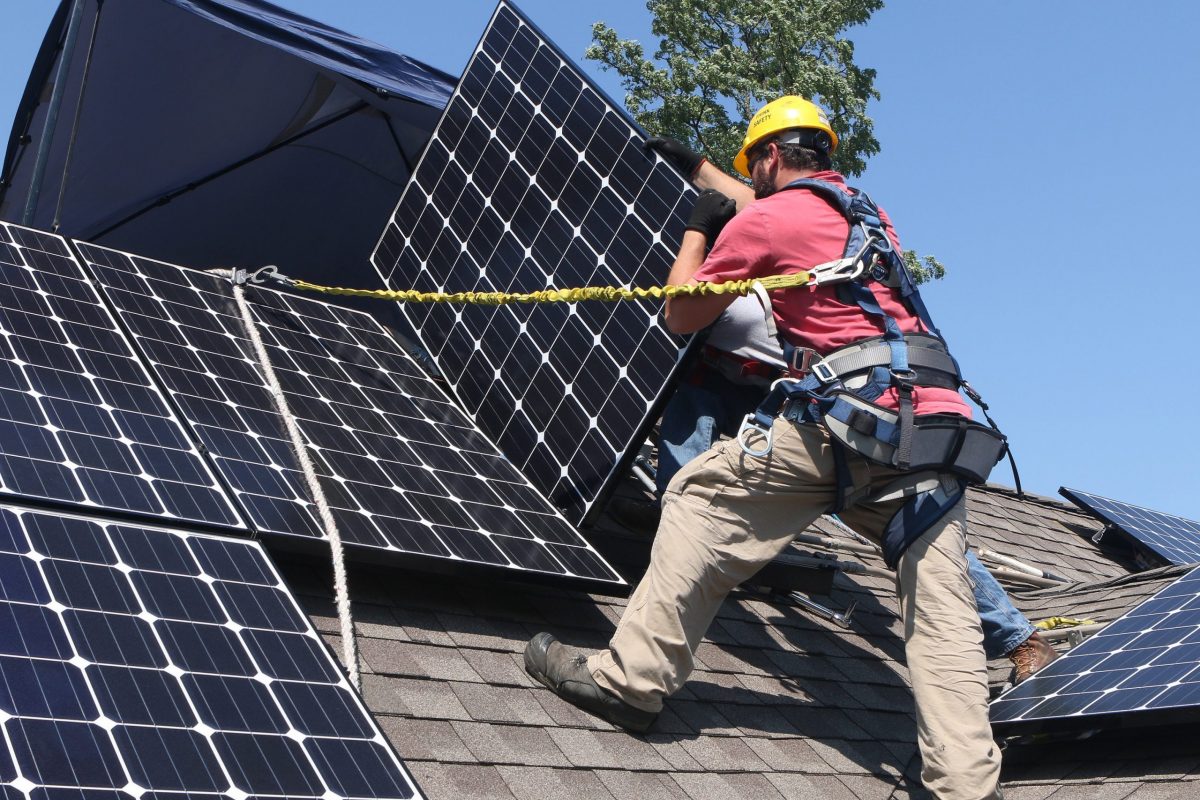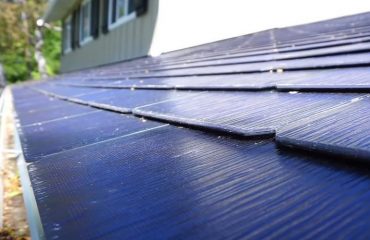Blockchain technology is revolutionizing how homeowners manage and trade energy, offering a secure and transparent way to take control of their power consumption. By creating an immutable digital ledger of energy transactions, blockchain enables households to buy, sell, and store energy directly with neighbors, eliminating expensive middlemen and reducing utility costs by up to 40%. This peer-to-peer energy trading system transforms ordinary homes into active participants in the local energy marketplace, where excess solar power can be automatically sold to nearby properties, creating passive income while strengthening community energy resilience.
For environmentally conscious homeowners, blockchain’s smart contracts ensure that every kilowatt of power consumed can be traced to its source, making it easier than ever to verify and prioritize renewable energy usage. Whether you’re considering solar panels or simply want to reduce your carbon footprint, blockchain technology offers a practical path toward energy independence while contributing to a more sustainable future.
How Blockchain Makes Your Home Energy Storage Smarter
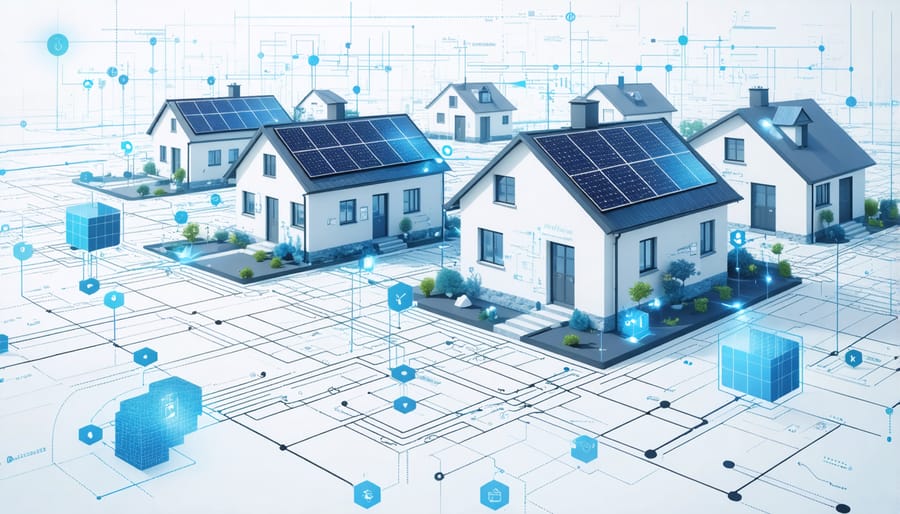
Real-Time Energy Trading
Blockchain technology is revolutionizing how homeowners can manage their energy usage and trading capabilities. With smart solar storage solutions, you can now automatically buy and sell excess energy directly with your neighbors, eliminating the traditional utility company middleman. This peer-to-peer trading system works seamlessly through smart contracts that execute trades based on your predetermined preferences and energy needs.
When your solar panels generate more power than you need, the system automatically sells the surplus to nearby homes or feeds it into community solar storage networks. Similarly, when your panels aren’t producing enough energy, the system purchases power from neighbors with excess capacity – all at rates typically lower than utility company prices.
The entire process is automated, secure, and transparent, with every transaction recorded on the blockchain. This means you can track your energy trading history, monitor savings, and adjust your preferences through a user-friendly mobile app or web interface. Best of all, the system operates 24/7, maximizing your potential savings while contributing to a more sustainable, decentralized energy grid.
Smart Contract Automation
Smart contracts on the blockchain work like digital assistants for your home energy system, automatically making decisions that save you money and maximize efficiency. Think of them as a trustworthy middleman that manages your energy transactions without any human intervention needed.
When your solar panels produce excess electricity, smart contracts can automatically sell this surplus to neighbors who need it, ensuring you get the best price without having to monitor the market yourself. During peak demand periods, these contracts can automatically switch your home to stored battery power, helping you avoid high utility rates.
These automated agreements also handle billing and payments instantly. When you share energy with neighbors or draw from the grid, transactions are processed immediately and securely. The system can even learn your energy usage patterns over time, automatically adjusting your home’s energy sources to optimize savings.
For homeowners, this means no more manual monitoring or complex decision-making about when to use, store, or sell energy. The smart contract system handles everything transparently and efficiently, helping you maximize the return on your renewable energy investment while contributing to a more sustainable community.
Financial Benefits for Solar Homeowners
Maximizing Energy Storage Value
Blockchain technology is revolutionizing how homeowners can maximize your energy storage ROI by making smart decisions about when to store or sell excess energy. This innovative system uses real-time data and automated smart contracts to help you make the most of your home’s energy storage capabilities.
When your solar panels generate more power than you need, blockchain-powered algorithms analyze multiple factors including current electricity rates, weather forecasts, and your typical usage patterns. This helps determine whether storing energy in your battery system or selling it back to the grid will be more profitable at any given moment.
For example, if electricity prices are predicted to spike during evening hours, the system might automatically store your excess daytime production. Conversely, if rates are high during peak production hours, it could sell your excess energy immediately for maximum profit. This dynamic decision-making happens continuously, ensuring you always get the best value from your energy system.
The technology also enables participation in energy trading communities, where you can buy and sell stored energy directly with neighbors. This peer-to-peer trading capability often results in better rates than traditional grid transactions, while building a more resilient local energy network.
By automating these complex decisions, blockchain removes the guesswork from energy storage management, helping you achieve better returns on your investment while contributing to a more sustainable energy future.

Reduced Operating Costs
Blockchain technology brings significant cost savings to energy management through its innovative approach to automation and simplified transactions. By eliminating the need for multiple intermediaries and reducing administrative overhead, blockchain can cut operational costs by 20-30% on average.
The automation of energy trading and management processes means fewer human resources are needed for routine tasks. Smart contracts automatically execute agreements between energy producers and consumers, handling everything from meter readings to payments without manual intervention. This streamlined approach not only reduces labor costs but also minimizes the potential for human error.
Traditional energy systems often involve multiple parties – utilities, grid operators, brokers, and financial institutions – each adding their own fees to transactions. Blockchain eliminates many of these middlemen, creating direct peer-to-peer connections between energy producers and consumers. The result is lower transaction fees and faster settlement times.
Additionally, blockchain’s transparent nature helps identify inefficiencies in energy distribution and consumption patterns. This visibility allows homeowners and energy providers to optimize their operations and reduce waste. The technology’s built-in security features also lower the cost of protecting against fraud and cyber threats, which traditionally requires significant investment in separate security systems.
For homeowners participating in energy trading, these cost reductions translate to lower energy bills and better returns on their renewable energy investments.
Getting Started with Blockchain Energy Storage
Compatible Storage Systems
When it comes to blockchain-enabled energy systems, several storage solutions work seamlessly to help you maximize your energy efficiency and savings. Battery storage systems, particularly lithium-ion batteries like the Tesla Powerwall and LG Chem RESU, are perfectly suited for blockchain integration. These smart batteries can communicate with blockchain networks to store excess energy during low-demand periods and release it when needed.
Home energy storage systems that feature smart inverters are especially compatible, as they can process the data needed for blockchain transactions in real-time. Popular options include the Sonnen eco, which comes with built-in smart technology ready for blockchain integration, and the Enphase Encharge, which offers excellent compatibility with distributed energy networks.
For those interested in community energy trading, larger-scale storage solutions like flow batteries and advanced compressed air systems can also connect to blockchain networks. These systems are particularly useful for neighborhood microgrids, where multiple households share energy resources.
What makes these storage systems truly “blockchain-compatible” is their ability to:
– Record energy production and consumption data
– Communicate with smart meters
– Execute automated energy trades
– Respond to real-time pricing signals
– Store and validate transaction data
When choosing a storage system for your blockchain-enabled setup, look for those with open communication protocols and smart connectivity features. Most modern solar battery systems now come with these capabilities built-in, making it easier than ever to participate in blockchain-based energy networks while maintaining reliable backup power for your home.

Integration Process
Integrating blockchain technology with your existing solar setup is simpler than you might think. Here’s how to get started in four manageable steps:
First, connect with a certified blockchain energy provider in your area. These companies specialize in setting up the necessary smart meters and communication systems that will track your energy production and consumption. They’ll assess your current solar setup and recommend the most compatible blockchain solution.
Next, install a blockchain-enabled smart meter. This device replaces your traditional electric meter and connects to your home’s internet network. It automatically records energy data and facilitates secure transactions through the blockchain platform.
The third step involves setting up your digital wallet and energy trading account. Your provider will help you create a secure account where you can monitor your energy credits, set trading preferences, and manage transactions. Think of it like an online banking app, but for energy instead of money.
Finally, configure your automation preferences. You can choose when to buy, sell, or store energy based on factors like time of day, current rates, and your household’s typical usage patterns. Many systems offer mobile apps that let you adjust these settings from anywhere.
The entire process typically takes 2-3 days, with most of the technical work handled by professionals. Once set up, the system operates automatically, requiring minimal input from you. Regular software updates ensure your system stays current with the latest blockchain developments and security features.
Remember to check local regulations and utility company policies, as requirements for grid-connected blockchain systems vary by location.
Blockchain technology is revolutionizing how we think about and manage energy in our homes. By embracing this innovative solution, homeowners can take control of their energy consumption, reduce their carbon footprint, and potentially save money on their utility bills. The transparency and security offered by blockchain ensure that every kilowatt of energy is accurately tracked and fairly traded, while smart contracts automate payments and energy distribution efficiently.
As we move toward a more sustainable future, blockchain provides the foundation for a democratized energy marketplace where homeowners can actively participate in energy trading and management. The technology’s ability to integrate with existing solar panels, smart meters, and home energy storage systems makes it an accessible option for those looking to modernize their homes.
Now is the perfect time to explore how blockchain can enhance your home’s energy efficiency. Whether you’re considering solar installation or looking to optimize your existing setup, blockchain technology offers a practical pathway to smarter, cleaner, and more cost-effective energy management. Take the first step today by consulting with local energy providers about blockchain-enabled solutions and join the growing community of forward-thinking homeowners embracing this transformative technology.

